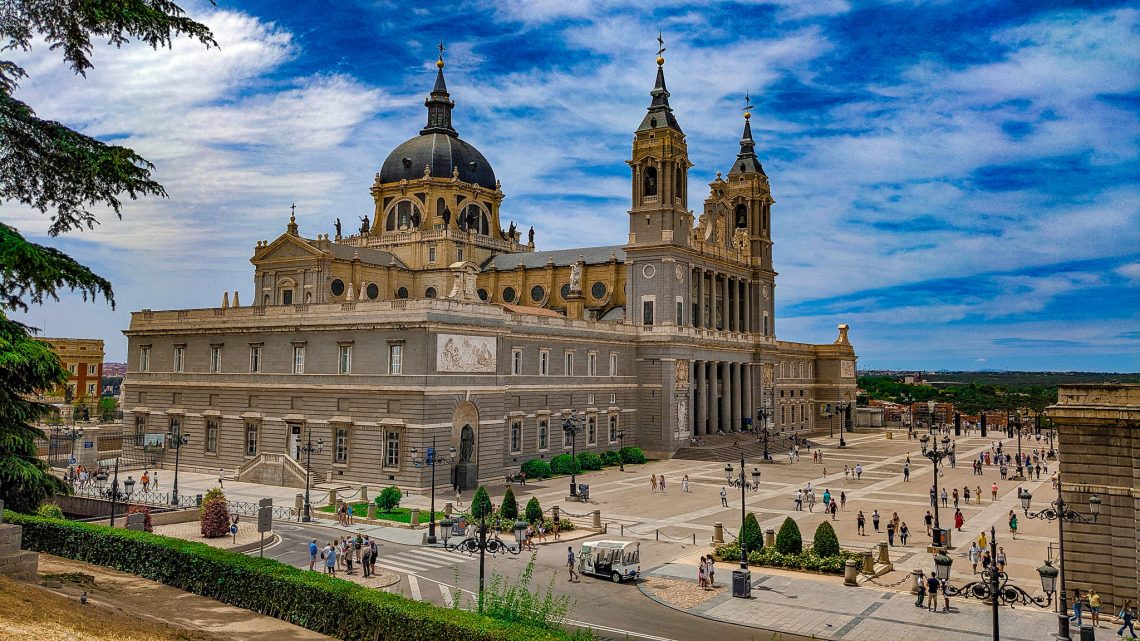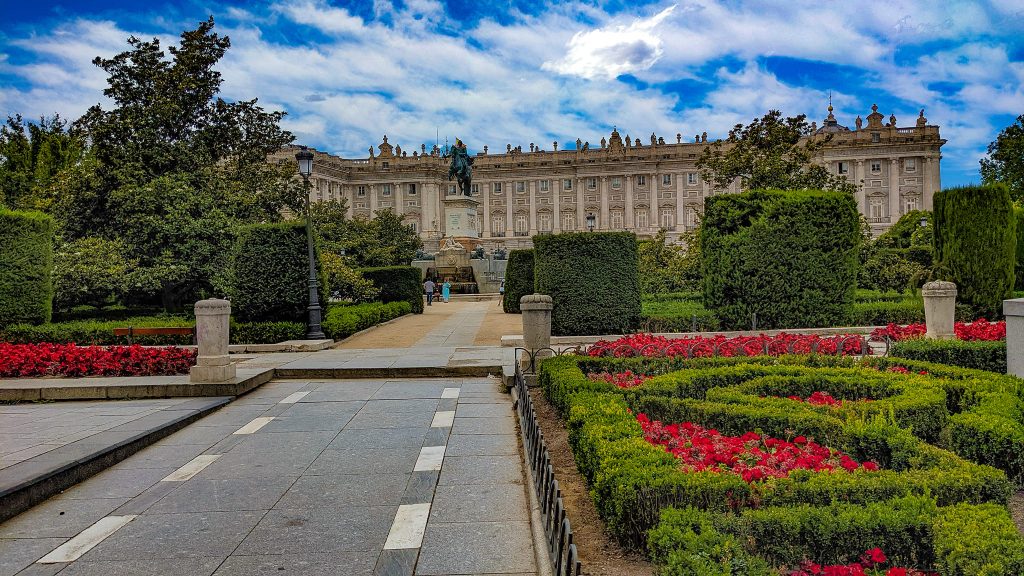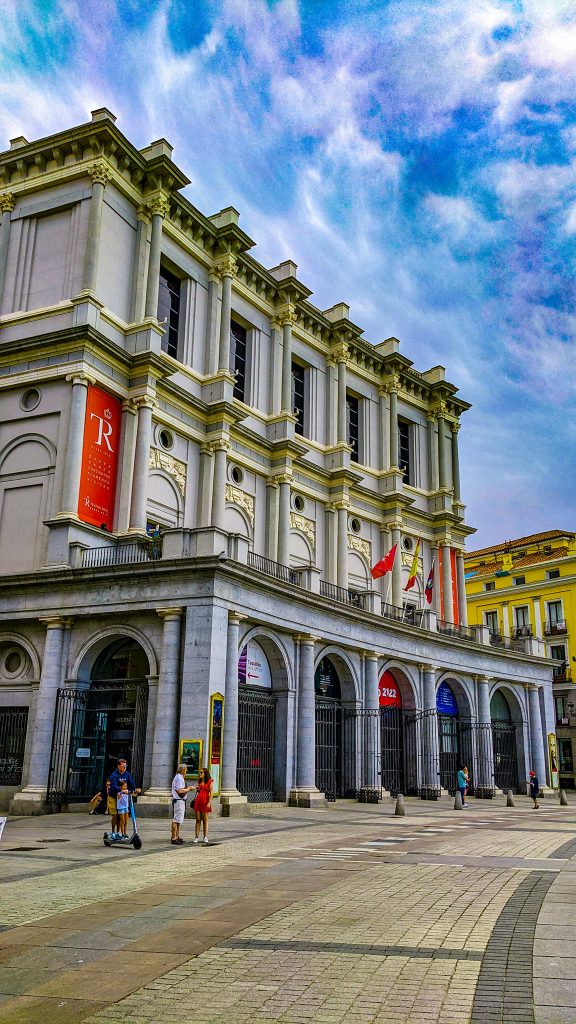
Experiencing the Elegance and Opulence of the Royal Palace of Madrid
Welcome to the Royal Palace of Madrid, one of the most impressive buildings in the Spanish capital. As you walk through its majestic halls, you’ll feel like you’ve stepped back in time to a world of grandeur and opulence.
The Royal Palace of Madrid is the official residence of the Spanish Royal Family, but it’s also open to the public for tours. It was built in the 18th century by King Philip V, and its architecture is a stunning example of the Baroque style. With over 3,000 rooms, it’s one of the largest palaces in Europe.
As you enter the palace, you’ll be greeted by the grand staircase, which leads to the King’s Apartments. These rooms are adorned with exquisite tapestries, paintings, and furniture, and they give you a glimpse into the lives of the Spanish royalty. You’ll see the Throne Room, where official ceremonies are held, and the Banquet Hall, where lavish feasts are hosted.
Another highlight of the palace is the Royal Armoury, which houses an impressive collection of armor and weapons used by the Spanish monarchy throughout history. The collection includes swords, helmets, shields, and other pieces that date back to the 15th century.
One of the most breathtaking parts of the palace is the Royal Chapel. This ornate chapel features stunning frescoes on the ceiling, intricate carvings, and a magnificent pipe organ. It’s still used today for royal weddings and other special events.
After exploring the palace’s interior, make sure to take a stroll through its beautiful gardens. The Sabatini Gardens were designed in the neoclassical style in the 18th century, and they offer stunning views of the palace and the surrounding city.
Overall, the Royal Palace of Madrid is a must-visit destination for anyone interested in history, art, or architecture. Its grandeur and beauty will leave you in awe, and you’ll come away with a newfound appreciation for the Spanish monarchy’s rich heritage.
History of the palace
The history of the Royal Palace of Madrid dates back to the 9th century when it was originally a fortress built by the Moors. The fortress was then captured by Christian forces in the 11th century and was turned into a royal palace.
In the 16th century, the old palace was destroyed by a fire, and King Philip II commissioned a new palace to be built on the same site. This palace was known as the “Alcazar,” and it served as the official residence of the Spanish monarchy for over two centuries.
In 1734, another fire broke out, completely destroying the Alcazar. King Philip V then commissioned a new palace to be built in its place. The new palace was designed by Italian architect Filippo Juvarra in the Baroque style, and construction began in 1738.
However, Juvarra passed away before the palace was completed, and the project was taken over by another architect, Francesco Sabatini. Sabatini made some changes to Juvarra’s original plans and finished the palace in 1764.
Over the years, the Royal Palace of Madrid has undergone various renovations and additions, including the construction of the Sabatini Gardens in the 20th century. Today, the palace is a symbol of Spain’s rich history and cultural heritage, and it remains the official residence of the Spanish Royal Family.
There are many reasons to visit the Royal Palace of Madrid:
- Rich history: The Royal Palace of Madrid has a fascinating history that spans over 1,000 years. It has served as the official residence of the Spanish monarchy for centuries, and it has played an important role in Spanish history.
- Beautiful architecture: The palace is a stunning example of Baroque architecture, with intricate carvings, ornate decorations, and impressive artwork. The palace’s grandeur and beauty are sure to leave visitors in awe.
- Artistic treasures: The Royal Palace of Madrid houses an impressive collection of artwork, including paintings, sculptures, and tapestries. The palace’s galleries are filled with masterpieces by some of the most famous artists in history.
- Royal Armoury: The palace’s Royal Armoury is one of the most extensive collections of armor and weapons in the world. It includes pieces that date back to the 15th century and provides a fascinating glimpse into Spain’s military history.
- Royal Chapel: The Royal Chapel is one of the most breathtaking parts of the palace. It features stunning frescoes on the ceiling, intricate carvings, and a magnificent pipe organ. It’s still used today for royal weddings and other special events.
- Sabatini Gardens: The palace’s gardens are a beautiful place to relax and take in the stunning views of the palace and the surrounding city. The Sabatini Gardens were designed in the neoclassical style in the 18th century and are a popular spot for tourists and locals alike.
Overall, the Royal Palace of Madrid is a must-visit destination for anyone interested in history, art, or architecture. It’s a true gem of Spain’s cultural heritage and offers a unique opportunity to step back in time and experience the grandeur and opulence of the Spanish monarchy.
The Royal Palace of Madrid is located in the heart of the city and is easily accessible by public transportation. Here are some ways to get around the area:
- Metro: The nearest metro station to the Royal Palace is Opera, which is on Line 2 and Line 5. From there, it’s a short walk to the palace.
- Bus: There are several bus routes that stop near the Royal Palace, including numbers 3, 25, 39, and 148. Check the Madrid public transportation website for more information on bus routes and schedules.
- Walking: The Royal Palace is located in the historic center of Madrid, and many other tourist attractions, such as Plaza Mayor and Puerta del Sol, are within walking distance. Walking is a great way to explore the area and take in the sights and sounds of the city.
- Bicycle: Madrid has a public bike-sharing system called BiciMAD, which is a convenient and eco-friendly way to get around the city. There are several BiciMAD stations near the Royal Palace where you can rent a bike.
Once you arrive at the Royal Palace, you can explore the palace’s interior and the surrounding gardens on foot. The palace is quite large, so be sure to wear comfortable shoes and allow plenty of time to see everything.
Here are some frequently asked questions about the Royal Palace of Madrid:
- What are the opening hours of the Royal Palace of Madrid? The opening hours of the Royal Palace of Madrid vary depending on the season. Generally, the palace is open from 10:00 am to 6:00 pm from October to March, and from 10:00 am to 8:00 pm from April to September. However, it’s always a good idea to check the official website for the most up-to-date information.
- Is photography allowed inside the palace? Photography is generally allowed inside the Royal Palace of Madrid, but there are some restrictions in certain areas. Flash photography is not permitted, and some rooms may be off-limits to photography.
- Are guided tours available? Yes, guided tours of the Royal Palace of Madrid are available. These tours are led by knowledgeable guides who can provide insights into the history and architecture of the palace. You can book a guided tour through the palace’s official website or at the ticket office on site.
- Is the palace wheelchair accessible? Yes, the Royal Palace of Madrid is wheelchair accessible. There are elevators and ramps throughout the palace, and special assistance is available for visitors with disabilities.
- How much does it cost to visit the palace? The cost of admission to the Royal Palace of Madrid varies depending on the type of ticket you purchase. Adult tickets are €13, while discounts are available for seniors, students, and children. There are also free admission days for EU citizens and residents on certain dates throughout the year. Check the official website for more information on ticket prices and discounts.
- Can I visit the Royal Palace of Madrid on Mondays? No, the Royal Palace of Madrid is closed to the public on Mondays, except for certain holidays and special events. Be sure to check the official website for the most up-to-date information on opening hours and closures.
The Royal Palace of Madrid is located in the heart of the city, which means that there are plenty of great dining options nearby. Here are some suggestions for food around the area:
- Mercado de San Miguel: This is a popular food market located just a few minutes’ walk from the palace. Here you can find a variety of Spanish and international cuisine, including tapas, seafood, meats, and pastries.
- Casa Toni: This restaurant specializes in traditional Spanish cuisine, with a particular focus on seafood. It’s located in the La Latina neighborhood, just a short walk from the palace.
- Botín: This historic restaurant is known for its roast suckling pig and lamb, as well as its cozy atmosphere. It’s located near the Plaza Mayor, which is a 10-15 minute walk from the palace.
- La Taberna del Alabardero: This restaurant is located right next to the Royal Palace and offers a variety of traditional Spanish dishes, including paella, tapas, and cured meats.
- Chocolatería San Ginés: This is a must-visit spot for anyone with a sweet tooth. They serve delicious churros and hot chocolate, which make for a perfect afternoon snack after visiting the palace.
- El Brillante: This is a classic Madrid bar located in the nearby Atocha neighborhood, famous for its sandwiches, especially the calamari sandwich.
These are just a few suggestions, but there are plenty of other great dining options around the Royal Palace of Madrid. Whether you’re in the mood for traditional Spanish cuisine or international fare, you’re sure to find something to suit your tastes.
Here are some of pictures: A pictures of the grand façade of the Royal Palace: This majestic building is an impressive sight to behold, with its neoclassical architecture and ornate detailing.












